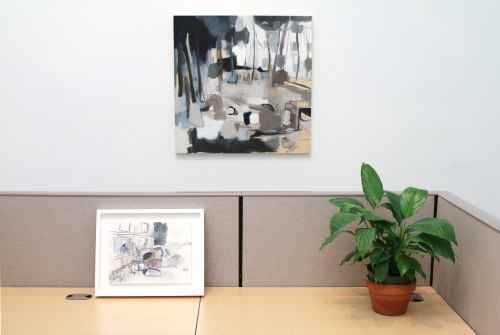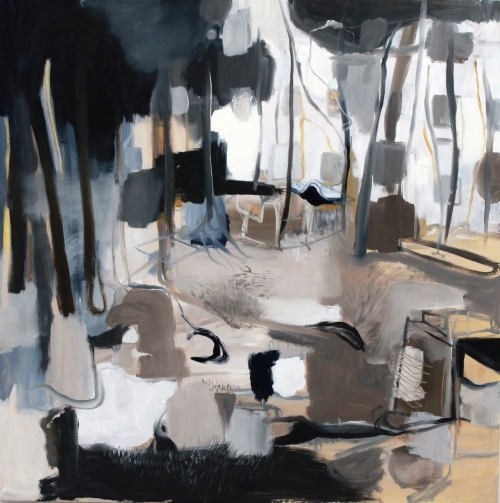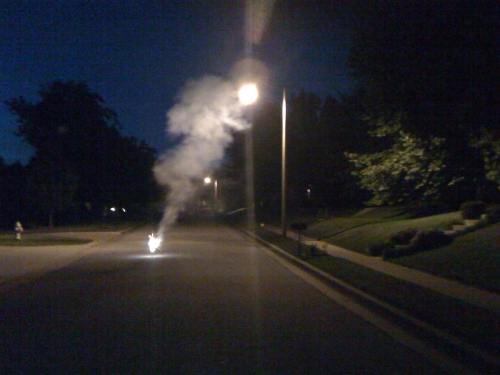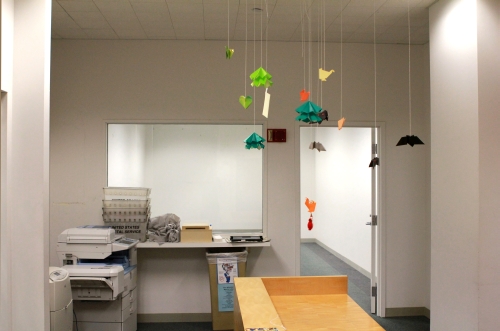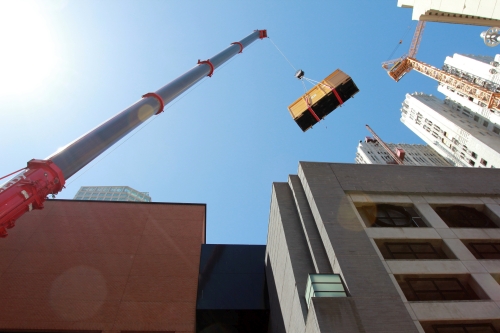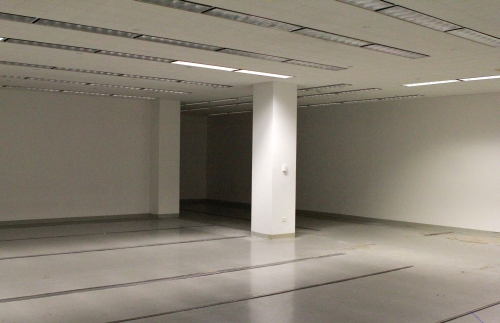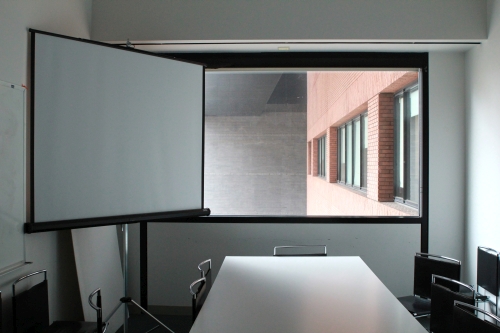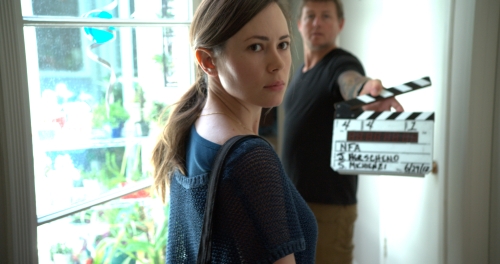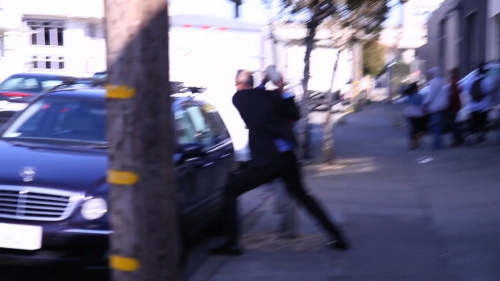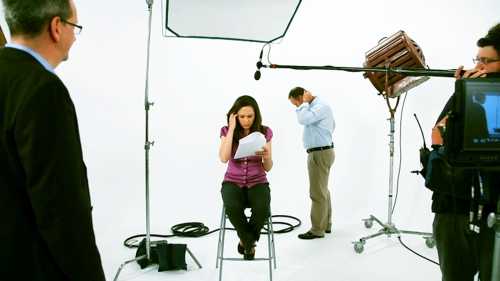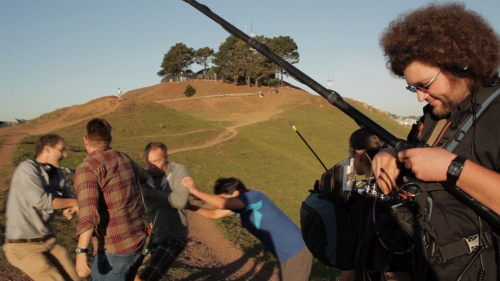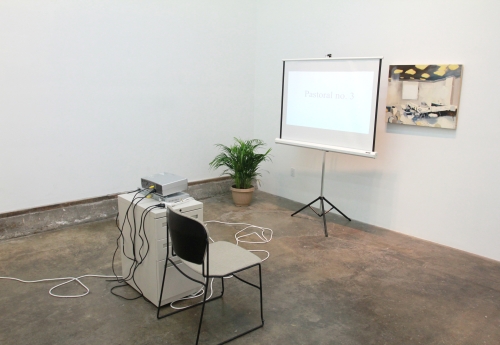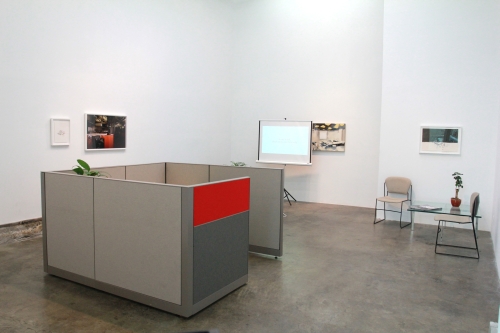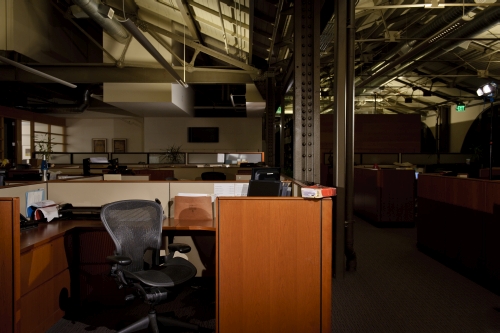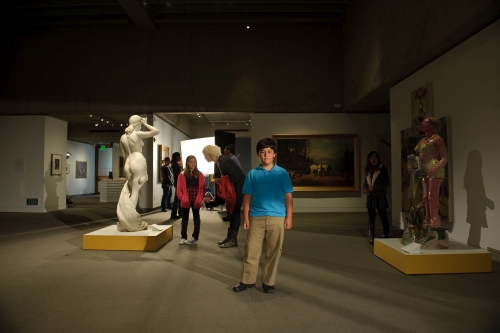

by A WILL BROWN
Jonn Herschend (b1967) is an interdisciplinary artist, film-maker and experimental publisher whose work explores fiction, reality and common narrative structures that are often taken for granted. His videos, performances, installations and photographs all incorporate sterile and formally recognisable structures, such as PowerPoint presentations, academic lectures, photographic evidence, infomercials, gallery exhibitions, or educational videos, to create tidily humorous, yet distinctly weighty, juxtapositions.
A Will Brown: Who are your most important influences — artists, films, books, artworks, writers, film-makers, public and private figures?
Jonn Herschend: My go-to is Cervantes’ Don Quixote. It’s amazing because it is the first modern novel, but it also has a sort of postmodernist structure. The narrator continually reminds the reader of the structure of the book, saying that the manuscript was found and has been translated. It’s also completely filled with sex jokes, farce, farts and violence. I love that it’s entertainment, but is also constantly forcing you to consider your role as reader. Book two came out many years after book one, and it operates as a reality show because everyone who encounters Don Quixote and Sancho Panza has already read about them in book one, so they set up to create these elaborate fictions for them. I feel that all my work tends to start from this sort of structural setup.
I get most of my inspiration from film. Currently, I’m obsessed with Jonathan Glazer’s Under the Skin. It’s absolutely brilliant, in that it doesn’t give the viewer any backstory. I keep thinking about how solid that movie is and how perfect Scarlett Johansson is in her role, considering the theme of the film. I’ve also been very taken with Birdman and the way [Alejandro Gonzalez] Iñárritu played with narrative structure of front of house/back of house. And just as with Quixote, the viewer is constantly having to rearrange his/her role. That scene where we (the audience) are watching the onscreen audience applaud is mind-blowing – so great. I’m very influenced by film directors who are able to push an experimental agenda while keeping it couched in entertainment … or have it appear to be entertainment, but then go in a totally different direction, as is the case with Under the Skin. I look for it whenever I can.
I’m also deeply into the films of Claire Denis and her cinematographer Agnès Godard. I really love her unabashed poetic imagery and the way she feels her way through a scene. The camera does crazy things, but the conviction is 100% there, and I’m with her all the way. I feel that’s why Birdman worked for me. There was a gutsy conviction in the whole enterprise.
AWB: What are the central aims of your work? What ideas or motifs do you find yourself returning to, and can you trace the beginning of any of these central ideas?
JH: I’m very interested in the front of house and back of house as a metaphor for the way we see life. We have these two sides, and we often assume that everyone is seeing things the way we are seeing them. But there’s so much confusion, even in something that simple. I grew up in a setting where my parents ran an 1880s theme park in Missouri, so I was always seeing the front of house and the back of house. One summer, when I was in college in Boston, I went back home to work at the theme park. I was a train robber. It was a sort of Waiting for Godot experience. Myself and another robber would sit in a “robber shack” and wait for the train to arrive, which ran about once every 30 minutes. We would go through a scripted robbery with the conductor. One of us would be shot (in the arse … total slapstick) and then we would wait for the next train and do it all again. The moments in the shack were the real moments for me, and the moments during the robbery were the pretend moments. But for the audience, it was the reverse. Either way, I continually return to this as a motif in my work. I think a lot about cycle, repetition, comedy, drama and the existential crisis – all of that together.
AWB: When did you start making films and what are the key distinctions for you between a film for the screen and one for the gallery? Are some for both?
JH: I started making films in grad school at the University of California, Berkeley. I knew I wanted to make narrative films, and I knew I would have trouble making them fit in a gallery context. Who has time to sit through a 10-minute narrative film in a gallery? It’s a terrible idea to make narrative films for this sort of venue. But it was the world I was operating within, and I also really liked that there was a built-in potential for a critical audience, or any sort of audience, for that matter. On the other side of this are film-makers who toil away to make a short film that will only ever be seen in a festival setting (if they are lucky). So the gallery/museum context allows for an audience, and very often a critical and engaged one. But there is a sort of context for these films and, for the most part, they do not contain narrative in a traditional sense.
There are clearly amazing artists who have already wrestled with this and pushed. I’m not the first person to wrestle with it. Eve Sussman comes to mind almost immediately. The way she takes the narrative format and turns it on its head is so smart. I also think Sam Green has worked very creatively to solve the problem in an interesting way by creating a live experience.
Ultimately, I like having my films in gallery spaces. It’s a great problem to solve. But I really love it when my films are on the big screen in a more formal sit-down screening. I recently was able to see my latest film, Discussion Questions, which was at the 2014 Whitney Biennial, screened at the 2014 Telluride film festival. The reactions could not have been more different. At the Whitney, it was met with silence in the gallery setting, maybe a few small laughs. But at Telluride, it was met with applause and a lot of enthusiasm. Part of it is that we are conditioned to get that way at film festivals, but I’ve yet to be in a museum when people cheered and applauded for a work of art.
AWB: Do your projects usually begin with a setting, a character, a passage of writing, or a general idea?
JH: They usually begin with a general idea, and then there’s a lot of bad writing until I get to a place where the characters and the story start to become truly compelling and exciting. It’s super fun to think about potential scripts, but it’s a real nightmare to dive into it. I hate the process of writing. I much prefer working through a messy painting. With the last film, I decided it would be a PowerPoint presentation and the narrator would be discussing other films in the screening series. I was thinking about how this film would exist with a series of other films. I was also thinking of Soviet montage theory, and trying to use capitalist tools (PowerPoint) with very little money (the film was made without any funding), to produce a film that the viewer would populate with imagery and voice. Initially, I thought there would be a murder (all in PowerPoint. I wanted to see how far I could push the medium), but it turned out that the main character just wanted to dance. So the end becomes this sort of dance party, wherein he tries to prove that he’s not a stuffy guy, but a great dancer. I didn’t know it was going to turn out that way, but as I hacked and hacked at that piece, his personality began to emerge. I also had a conversation with the composer I was working with, Silas Hite – who is absolutely amazing – about creating a dance party that slowly takes over the film, and he created this amazing, over-the-top soundtrack. Once these things began to click, I realised that the character would need to dance, as opposed to kill. He would kill them with his dance moves. But I would never have known this about him if I hadn’t waded through all the mess of writing.
AWB: What are some of the most compelling trends in contemporary film-making and art-making? What are you seeing or reading about that excites and engages you?
JH: I’m really excited that so many artists are making films. Independent film has become a sort of Hollywood-lite. For the most part, it caters to distributors who are looking for Hollywood-style bromances or thrillers. There are definite exceptions to that. But there is also a wave of artists who are starting to use the big screen as a means to push a more exciting agenda. They already have a support base with the art world and are interested in broadening their conversation. I really think that Europe is a lot more supportive of films that do not have an overt plot, and we see so many amazing films that continue to come from places in Europe and Eastern Europe, Iran, India and Asia … the rest of the world, I guess. But in the US, it seems really difficult to produce and distribute a film that doesn’t conform to a specific narrative formula. However, in the past few years we’ve seen visual artist Steve McQueen win an Oscar for 12 Years a Slave, and Laurel Nakadate nominated in the Someone to Watch category of the 2011 Independent Spirit Awards for her film The Wolf Knife. The Zellner Brothers recently received distribution for their very strange film Kumiko, the Treasure Hunter, which I thought was really great. And, of course, Miranda July has been pushing this medium for the past 10 years.
AWB: How has your work as a curator/publisher affected your work as an artist? What parts of publishing the Thing Quarterly are most important to you?
JH: I’m much more professional in my dealings with other curators. Everyone we work with has really been on the ball with deadlines and responses. When I’m working with a curator on my own work, I try to be very responsive and focused with deadlines. It makes a big difference to me (as an editor at the Thing) when contributors are responsive and focused. Fortunately, everyone we have worked with so far has been very professional – and friendly. This combo changes everything.
As for the parts of publishing TTQ that are the most important, I think the collaboration with Will Rogan is essential. I’m blown away by his work, particularly the unabashed poetic stance he takes with his work. We started this project as a way to collaborate, and it’s continued to this day as such. I would not want to be doing this if he were not a part of it. I also really enjoy the fact that all of the crew working at TTQ are able to think collaboratively and creatively together. I also truly enjoy working with our contributors. It makes the day-to-day work exciting to know that I’m working with someone whose work I’ve admired for so long. Yes, we have to think about budgets and marketing and all that stuff now, but I find the challenge of that to be as exciting as the creativity that goes into making my own work. I think the big realisation for me in all of this is that good businesses have to be as creative as good artists, and the really great artists are somehow able to juggle both without losing themselves. I’m not sure if that sounds super-exciting, but I think about some of my heroes in the art and film world and literary world, and, at some point, they have to figure out how to run their studio practice in a way that allows them to live, but also allows them to have freedom to think creatively. That’s the balance I want to strike in my own life with my own work and the work at the Thing.
AWB: Can you talk about your 2013 project Stories from the Evacuation, which was premiered as part of the San Francisco Museum of Modern Art’s 2012 SECA Art Award exhibition? The film documents a real, ongoing situation, in a light and refreshing manner, with hints of documentary combined with fictional feature film. What was important about this project for you? It must have been fascinating to be on the inside for SFMOMA’s move.
JH: The project was proposed as something else. I wanted the backdrop of the museum’s evacuation to be a part of the plot, but once I got in there and we started to film B-roll of the moving and packing, I realised that there was another film. I just wasn’t sure at that moment what it was. I remember sitting down with the curators Jenny Gheith and Tanya Zimbardo and saying that there was another film that was taking place, but I wasn’t sure what it was going to be, and asking if they would be willing to trust me to figure it out. They agreed and were very enthusiastic, which is incredible. It was a huge risk, I felt, to pull this off, but I had to really let things happen and follow my intuition. I had a great cinematographer, Shawn Michienzi, and was collaborating with a very talented actress, Jennifer Stuckert, who was co-writing with me. We just filmed and filmed B-roll and started to interview people and treat it like a true documentary.
Jennifer was with me on set each day, and we started to see a story evolve and decided to put her into the film as the person in charge of the move. There was an actual person in that role in the museum, and Jennifer shadowed her for a few days to understand her job. The notion that there would be a breakup and a move-out was part of the larger arch, but we weren’t sure how we would get there.
I wanted it to be about change and risk, which I felt the museum was going through at that moment. I wanted to take a risk with my own work, as well. It had to be about the mess of confusion and clutter, the sort of thing that happens just before the light bulb goes on and we have a moment of clarity. In many ways, the process of making the film was part of the plot.
AWB: I would also like to highlight your works More Real?, Discussion Questions and Pastoral no. 5, and to think through some of the differences in style and technique that you use. Your work has incredibly well-executed layers of humour and parody at times and, at others, is much more serious, but there is always a very light touch, in which you manipulate reality ever so slightly, or offer a side-glance not normally presented on camera. How does the combination of humour and fictionalising reality shape your work?
JH: I love that reality is up for grabs. We have all these social media sites where we can dictate our external personality in a controlled way, but we don’t really ever have a grasp of how we are being perceived in our real-life, day-to-day interactions. We think we might, but we never know for certain how someone is interpreting our outward actions. There’s already an inherent confusion built into our life. So with that as a backdrop, I’m interested in taking ready-made formats – the documentary, the PowerPoint presentation, the short narrative film, the art film, the art gallery show, the lecture – and plugging the wrong information in, like setting up a format where we already have a preconceived notion of how to approach it (such as a PowerPoint presentation) and then taking an unreliable narrator with his own agenda, which is far too personal for the format, and letting the whole thing collapse into something else. It’s a little like the Sol LeWitt idea of irrational thoughts being followed logically, but in reverse.
Humour is also a major part of my work, mostly because I can’t help it. Even when I try to make something serious, it becomes funny. But I think we can use humour seriously in art in order to push agendas forward, particularly when it falls to a crowd outside the art world. I love serious films, I really do. And I also love comedies. But when something falls in between the two, such as the Swedish film Force Majeure, and you are not sure if you should be laughing or not, then I think it gets interesting. That’s exactly the sort of place I want to be working. Also, if you do something funny in an art context, it seems to be amplified, mainly because art is one long serious monologue and anything even remotely funny can act as comic relief.
AWB: Your combination of cinematic tropes – staging, casting, scripting, long shots – and the use of experimental techniques for unconventional ends is interesting. I’m thinking about Pastoral no. 5, with the long, single take that is seemingly improvised, yet scripted as such, with a long shot that takes on a really interesting sculptural and painterly quality. Can you tell me about that project in a bit more depth?
JH: I’m so happy you noticed that! I really love Pastoral no. 5. When I was working on that film, I was thinking of how something like that could exist in an art gallery context, the art gallery film. I wanted it to be beautiful and messy at the same time. It was something where you could just look at it and see the vista and feel it was almost a romantic painting. So I’m really happy that you noticed that aspect of the work. I don’t think anyone ever mentioned that to me. It was made to be part of a larger show called “the book you said I never returned”, and all the pieces in the show were trying to prove that the narrator had returned the book, but it gets confused. Instead, the narrator starts to address his love interest (Lisa) and starts to push back on his rival (Mark). That film was set up to be a part of that structure, but it was to be a romantic pastoral. However, it collapses under the weight of Mark, who somehow gets involved and continually thwarts the narrator’s fantasy.
We shot just after sunrise on Bernal Heights in San Francisco and had to do about five takes. It’s framed by the camera crew from beginning to end, and my gallerist (Steven Wolf) gives the marker in the beginning. So it’s really about this framing of reality and fantasy – art world and real world. People on the hill (in the film) had no idea what was going on. In the final take, there is even a woman in the background who starts yelling that she’s going to call the cops. You can’t run around in a dog park and yell that you’re going to kick someone’s dog. It creates a massive tension and dog owners are so weird about that stuff in a dog park, particularly if your dog starts humping another dog. This sort of scenario happened to me years ago. My dog was humping another guy’s dog, and he read the situation as though I was humping him. He wanted to kick my dog and chased him around the park trying to kick him. My dog thought it was the best game ever, but I was yelling at him that if he kicked my dog, I would kick him. So I was chasing him. It was completely comical, but also super intense … and total macho bullshit. So for this production, all the people who were watching had no idea what we were shooting. It was a live performance where they had to decide if they were watching something real or staged. For me, it was a sort of loop back to Quixote, where it’s a pastoral, but the structure-reveal is part of the framing device, and the whole thing falls into a sort of sex-comedy (people are humping in the foreground), and then a complete slapstick, ridiculous macho fight. I really enjoy long tracking shots in films. The best are the ones where you don’t realise it’s happening. But they reinforce a sense of reality. It also allows actors to act, which is something we don’t see enough of in American film.
AWB: I love the manipulation and borrowing of corporate and educational culture in your work, taking PowerPoint and promotional films and co-opting those forms. Can you tell me more about how you came to this approach and what is particularly compelling about it for you?
JH: Corporate and educational films are ubiquitous and usually so bad that they are the perfect delivery vehicle for plugging another drama or comedy into them. There’s a language that goes with each that we’ve come to expect. My favourite films are the ones you see when you come to small town airports and the chamber of commerce has pulled together a production to sell you on the town, usually with one or two hotels footing the bill, so we get to see them. I could watch those all day.
I came to the approach mainly because I knew I couldn’t pull off a real narrative film. I didn’t fully understand how those worked, but I wanted to make a film. I knew that I could pull off a bad infomercial and that I could collapse it into something else. And it really worked with the content I was pursuing at the time, a sort of explanation of confusion in a way that collapsed in on itself and became an example of what it was trying to prove.
AWB: What are you working on now? Is there anything that diverges from your past work?
JH: I’ve got two projects I’m working on. I’ve tried to pull back and focus only on two things. First, I’m working on feature film that will be shot in Branson, Missouri. It will be a film noir. I’m still in the writing phase and am working on it with Andrew Leland, editor of the Believer magazine. I’m hoping I’ll be able to start shooting a year from now. But there’s a long way to go between now and then. Second, I’m working on a series of paintings for an exhibition at some point next year. I’m really excited to be back in the studio and painting.
AWB: What are the best exhibitions you have seen recently, and what are the best artist and mainstream films and videos you have seen this year?
JH: I thought that Tony Discenza’s show at the Et Al gallery [in San Francisco] was tremendous. I’m also super-excited that Bob Linder has a new gallery, Capital Gallery, in Chinatown. His first show there with Will Rogan, Virginia Overton and Cynthia Daignault was super solid. I’m a big fan of Tucker Nichols’ work, and I loved his last show at Gallery 16. I’m really excited to see the new show at the Wattis Institute for Contemporary Arts with Jos de Gruyter and Harald Thys. I’ll be in NYC next week and looking forward to seeing some shows and films. As for films, I mentioned Birdman and Force Majeure. They were so damn good. I also thought Foxcatcher was tremendous.
